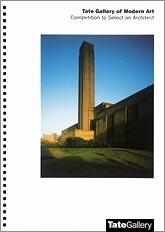The architecture

Tate Modern is a remarkable combination of old and new.
Bankside Power station was built in two phases between 1947 and 1963.
It was designed by the architect Sir Giles Gilbert Scott, who also designed Battersea Power Station and Waterloo Bridge.
Constructed of a brick shell supported by an interior steel structure, its striking monumental design with its single central chimney, had often led it to be referred to as an
industrial cathedral.
In July 1994 an international competition was launched to select an architect to redesign the power station.
By November, the initial 148 entrants had been whittled down to a shortlist of six. These were: David Chipperfield Architects; Office for Metropolitan Architecture/Rem Koolhaas;
Renzo Piano Building Workshop; Tadao Ando Architect and Associates; Herzog & de Meuron and Jose Rafael Moneo Arquitecto.
You can see all of the proposals presented by the short-listed architects in the Showcase.
In January 1995, the firm Herzog & de Meuron were announced as winners of the competition.
The dignified simplicity of their proposal impressed the jury.
Their respect for the original architecture, with subtle alterations rather than grand gestures, and the introduction of more light via the enormous roof light box, combined to
create an interior both functional and modern.
|

Competition brief for Tate Modern
© Richard Glover |
